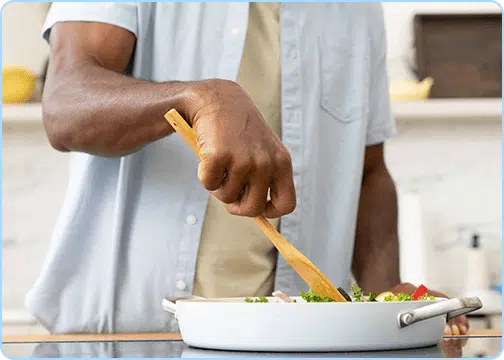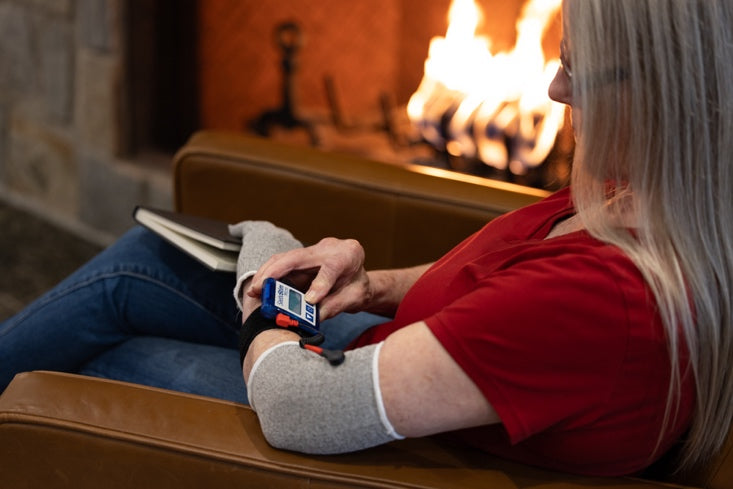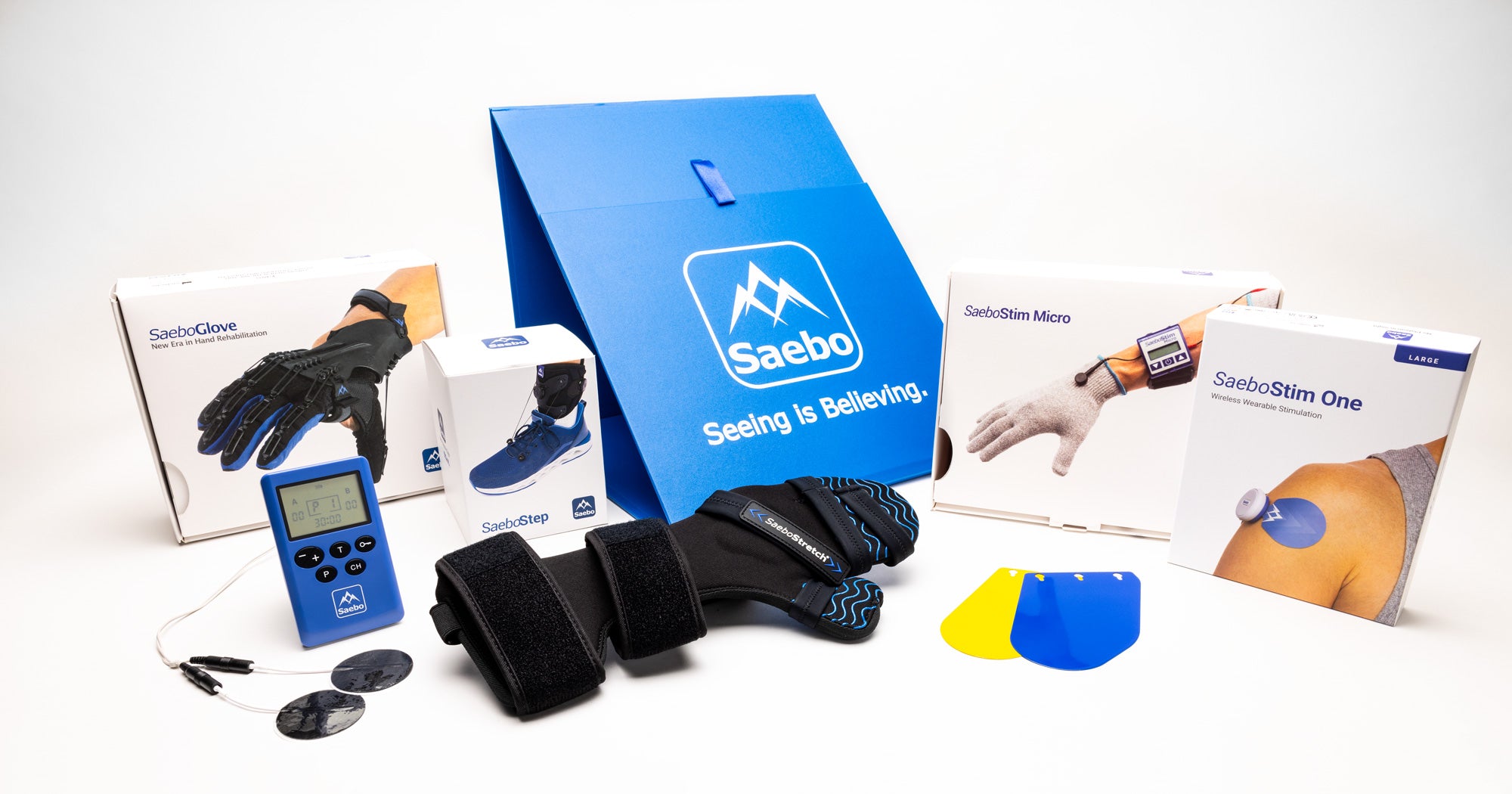SaeboGlove: A Patient's Guide to Support Hand Recovery After Stroke

This comprehensive guide will delve into the workings of the SaeboGlove, exploring proven rehabilitation techniques and specific exercises designed to boost hand strength and fine motor control in stroke recovery.
The SaeboGlove represents a groundbreaking solution for stroke survivors facing challenges with hand mobility. In the United States alone, over 7.5 million individuals have survived strokes, with a significant majority experiencing some degree of motor function difficulties afterward such as hemiparesis and hemiplegia [1]. Research shows that without targeted intervention strategies, nearly half of stroke survivors may show minimal improvement in hand function even six months after their stroke.
Regaining hand function plays a vital role in rebuilding independence and maintaining quality of life after stroke. Modern clinical studies have shown promising results for rehabilitation devices like the SaeboGlove. When compared to conventional therapy methods alone, assistive devices in conjunction with high quality rehabilitation have demonstrated remarkable improvements in patients' motor function scores. These findings emphasize how implementing appropriate rehabilitation strategies can substantially enhance recovery outcomes.
Understanding Hand Function Loss After Stroke
The loss of hand function is one of the most significant challenges faced by stroke survivors. Most experience a condition called paresis or paralysis, which limits their ability to voluntarily control muscles. This occurs when damage to the brain’s motor control pathways disrupts the signals traveling from the brain to the muscles.
The hands are often especially affected because they rely on highly specialized fine motor control. A large portion of the brain’s motor cortex is devoted to hand and finger movements, meaning even small areas of damage can interrupt the precise coordination needed for daily activities.
Stroke’s impact on hand function goes beyond simple weakness. Many patients have difficulty with selective motor control—the ability to move specific body parts independently—which often occurs alongside muscle weakness. Changes in muscle tone are also common, ranging from increased stiffness (hypertonicity) to decreased tone (hypotonicity). These issues can greatly reduce finger strength and manual dexterity, making everyday tasks more challenging. In severe cases, hand contractures may develop within the first six months after a stroke. The shoulder is also vulnerable, with muscle imbalances sometimes leading to partial dislocation (subluxation).
In the early days after a stroke, complete paralysis often transitions to weakness. The most rapid recovery typically occurs in the first 3–6 months, but improvements can continue for years thanks to the brain’s ability to rewire itself—a process called neuroplasticity [2]. With intentional rehabilitation, ongoing use of the affected hand, and gentle exercises, stiffness can be minimized and function maintained or even improved. Many survivors also discover creative, adaptive ways to accomplish daily tasks, allowing them to regain independence and confidence.
What the Research Says About Hand Function Post-Stroke
Medical evidence shows that starting hand rehabilitation early after a stroke is key, with the brain’s ability to rewire itself—known as neuroplasticity—being strongest in the first six months but continuing for years [2].
Research consistently finds that task-specific, repetitive practice is one of the most effective ways to improve hand function. Assistive devices like support this approach by enabling meaningful, high-repetition movements during both structured therapy sessions and everyday activities.
The SaeboGlove’s band assisted finger extension allows patients to actively grip and have an active-assisted release, making it easier to perform real-world tasks while also practicing rehab exercises. This integration of function and training helps reinforce new neural pathways, builds confidence, and promotes independence.
By allowing frequent, purposeful movement, supportive devices not only aid motor improvement but also help prevent stiffness and maintain flexibility—ensuring that rehabilitation continues beyond the clinic and into daily life.
How the SaeboGlove Works and How It Can Support Recovery
The SaeboGlove helps stroke survivors regain control of their hand through daily activities. Its unique design uses gentle elastic bands that help the fingers and thumb straighten naturally after grasping objects. It is intended to be a low-profile, everyday wearable option that can go beyond rehab exercises.
The glove's spiral design around the forearm keeps the wrist in a neutral position while helping the fingers extend. When wearing the glove, patients can actively bend their fingers to grab things, and the elastic bands help the hand open back up. Many people notice improvements right away, successfully picking up and letting go of objects during their first attempts.
What makes the Glove so effective is how adjustable it is. Healthcare providers can customize the level of help for each finger using different attachment points and different strength or size of bands. As patients get stronger, specific elastic bands can be removed to match their progress. The fingertips are coated with silicone to make gripping objects easier during everyday tasks.
The SaeboGlove strongly supports neuroplasticity, as the support it provides increases the affected individual’s ability to complete numerous repetitions of any given task. Starting to use the device early and maintaining regular practice helps prevent further hand weakness after stroke.
Exercises for Hand Weakness After Stroke
Successful upper limb rehabilitation after stroke requires a well-planned approach that works with the brain's natural healing abilities. Let's look at proven methods that work well alongside the SaeboGlove.
Neuroplasticity: How to Maximize Restoration
The brain has an amazing ability to heal through neuroplasticity, creating new pathways after stroke. Early intervention is key, as the brain is most receptive to healing in the first few months after stroke. Regular physical therapy or occupational therapy exercises, and structured activities help promote these positive brain changes. When patients consistently challenge their affected hand with exercises, it encourages natural healing and functional improvement [3]. Combining these exercises with real world application further expands their benefit.
Active and Passive Rehabilitation Exercises
Starting with passive exercises is often essential to keep muscles healthy and mobile when movement is limited. These include gentle stretching and assisted movements into a composite fist as well as full finger and/or wrist extension. As patients progress, they can begin active-assisted exercises with help from caregivers or supportive devices like the SaeboGlove. Eventually, patients may move on to independent exercises that focus on building strength and practicing everyday movements.
CIMT: Unlocking Hand Potential
Constraint-induced movement therapy (CIMT) involves limiting the use of the unaffected arm, encouraging patients to use their affected hand more often. This approach has shown good results in improving arm and finger function and helping patients use their affected limb more in daily activities. Many patients have success with CIMT programs they can do at home as they can complete their everyday tasks, allowing intentional practice with their affected limb. Again, the SaeboGlove is a viable option as to support CIMT as it reduces fatigue and increase success by providing varying levels of active-assisted motion into finger extension.
Task-Specific Training and Repetitive Task Training
Task-oriented exercises involve practicing everyday activities like eating, dressing, and personal care. This method helps improve hand function by repeatedly practicing meaningful tasks that matter in daily life that can also improve fine motor skills [4]. Regular, daily practice of these activities can lead to significant improvements in arm and finger function. The SaeboGlove provides support during these activities by assisting finger extension, making it easier to grasp and release objects. This allows for more effective practice of daily tasks and helps build strength and dexterity over time. While essentially any task that is meaningful and relevant to an individual, it is important to note that the tasks need to be “real-world” and require some degree of problem solving. Here are some examples:
- Picking up coins and placing them into a container
- Folding and stacking towels
- Buttoning and unbuttoning a shirt
- Opening and closing jars
- Using utensils to scoop or transfer objects
- Stacking plastic cups
- Picking up sponges or soft balls
- Flipping cars, stacking cards, organizing a card deck
- Pinching clothespins
Mirror Therapy: Seeing Movement to Restore Function
Mirror therapy provides a powerful approach to upper limb rehab by using visual feedback to help rewire the brain. When combined with the SaeboGlove, patients can perform assisted hand movements while viewing the reflection of their healthy hand in a mirror, creating the illusion that the affected hand is moving normally. This dual approach enhances neural stimulation and encourages improved arm function. Research indicates that integrating mirror therapy with assisted devices can lead to greater improvements in hand movement, especially in individuals with mild to moderate impairment [5].
Key Takeaways for Hand Recovery Post-Stroke
Stroke survivors face considerable challenges while working to regain hand function. The SaeboGlove effectively bridges the gap between clinical therapy sessions and daily activities. Its innovative tension system supports the brain's natural healing while enabling practical movements. Users can practice essential grasping and releasing motions—key skills for maintaining independence.
Successful hand rehabilitation after stroke combines multiple therapy approaches. The SaeboGlove works seamlessly with task-specific training, allowing patients to practice real-world activities while wearing the device. It also enhances constraint-induced movement therapy programs by supporting the affected hand during repeated use.
The SaeboGlove offers more than physical support—it brings renewed hope. Many stroke survivors feel discouraged when progress with traditional therapy slows, but this device allows patients to experience immediate functional gains. Its comfortable, lightweight design encourages regular use, helping to maximize the brain’s natural healing potential.
Every stroke recovery journey is unique, yet early intervention with the right tools can lead to meaningful improvements. The Glove’s adaptable design promotes active movement patterns while helping prevent secondary complications.
Regaining hand function after a stroke can be challenging, but combining evidence-based rehabilitation techniques with innovative solutions and devices opens the door to lasting recovery and renewed independence.
References
- https://pmc.ncbi.nlm.nih.gov/articles/PMC10727323/?utm
- https://www.hopkinsmedicine.org/health/conditions-and-diseases/stroke/stroke-recovery-timeline?utm
- https://pubmed.ncbi.nlm.nih.gov/19433020/
- https://pmc.ncbi.nlm.nih.gov/articles/PMC4563307/?utm
- https://pmc.ncbi.nlm.nih.gov/articles/PMC11721500/?utm
All content provided on this blog is for informational purposes only and is not intended to be a substitute for professional medical advice, diagnosis, or treatment. Always seek the advice of your physician or other qualified health providers with any questions you may have regarding a medical condition. If you think you may have a medical emergency, call your doctor or 911 immediately. Reliance on any information provided by the Saebo website is solely at your own risk.



